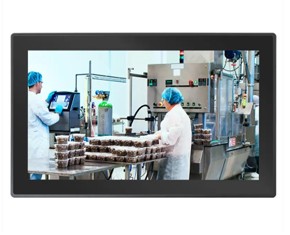Apr. 26, 2024
Touchscreens have become ubiquitous in modern society, revolutionizing the way we interact with technology on a daily basis. From smartphones and tablets to kiosks and ATMs, touchscreens offer intuitive and interactive interfaces that enhance user experience across various industries and applications.
One of the most common uses of touchscreens is in mobile devices such as smartphones and tablets. Touchscreens enable users to navigate through menus, type messages, browse the internet, play games, and access a wide range of apps with simple finger gestures.
Touchscreen kiosks are prevalent in public spaces, retail stores, airports, museums, and other locations where information or services need to be accessed quickly and efficiently. Users can interact with kiosks to obtain directions, check-in for flights, purchase tickets, or gather information about products or services.
Touchscreen displays have become standard features in modern vehicles, providing drivers with access to infotainment systems, navigation, climate controls, and vehicle settings. Touchscreens in cars allow for hands-free operation, minimizing distractions while driving.
Touchscreen technology has transformed the way educators deliver content and engage students in the classroom. Interactive whiteboards, tablets, and educational apps allow for dynamic and immersive learning experiences, catering to diverse learning styles and enhancing student participation.
Retailers and restaurants utilize touchscreen point-of-sale (POS) systems to process transactions quickly and accurately. Touchscreen terminals enable employees to input orders, accept payments, and manage inventory with ease, streamlining operations and improving customer service.
In healthcare settings, touchscreens are used in various applications, including electronic medical records (EMR) systems, patient monitoring devices, diagnostic equipment, and interactive patient engagement tools. Touchscreens enhance efficiency, accuracy, and communication among healthcare providers and patients.
Touchscreen technology has revolutionized the gaming industry, providing immersive gaming experiences on smartphones, tablets, handheld consoles, and arcade machines. Touchscreens offer intuitive controls and tactile feedback, enhancing gameplay and enjoyment for players of all ages.
Q: Are touchscreens durable?
A: Yes, modern touchscreens are designed to be durable and withstand frequent use. However, it's essential to handle them with care to avoid scratches or damage.
Q: Can touchscreens be used by people with disabilities?
A: Yes, touchscreens can be adapted to accommodate users with disabilities through features such as voice commands, tactile feedback, and screen readers.
Q: How do touchscreens work?
A: Touchscreens use capacitive or resistive technology to detect touch input. Capacitive touchscreens rely on the electrical properties of the human body, while resistive touchscreens use pressure-sensitive layers to register touch.
Q: Are there any drawbacks to using touchscreens?
A: While touchscreens offer many benefits, they may not be suitable for all applications or users. Some drawbacks include fingerprints and smudges on the screen, limited precision for fine tasks, and potential for accidental touches.
Q: What is the future of touchscreen technology?
A: The future of touchscreen technology holds exciting possibilities, including advancements in haptic feedback, gesture recognition, flexible displays, and augmented reality interfaces.
In conclusion, touchscreens have become indispensable tools in everyday life, offering convenience, interactivity, and accessibility across a wide range of applications and industries.



Capacitive Vs Resistive Touch Screens: When to Choose?
Mar. 14, 2025

How to Choose Capacitive Touch Monitors
Dec. 27, 2024